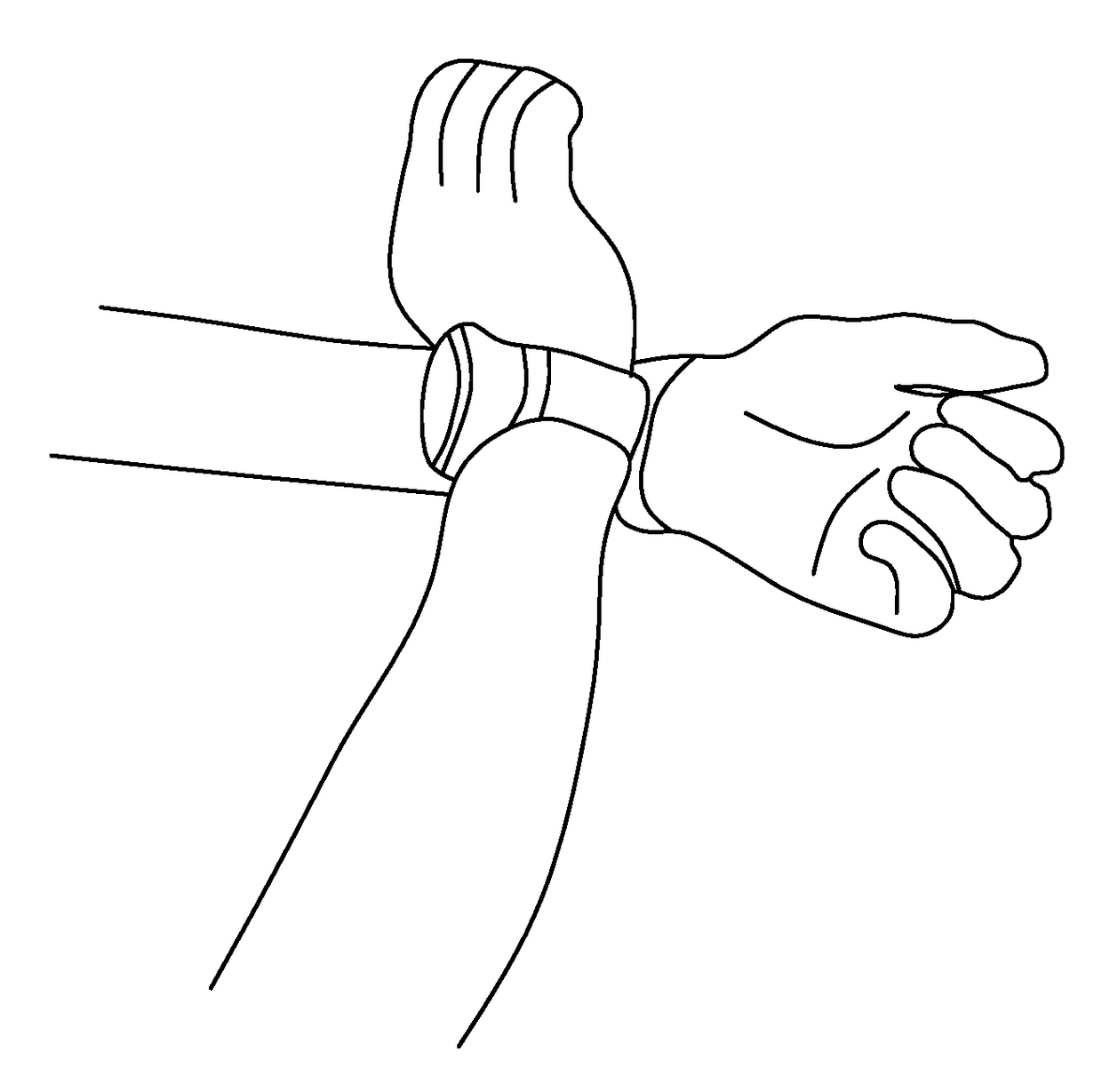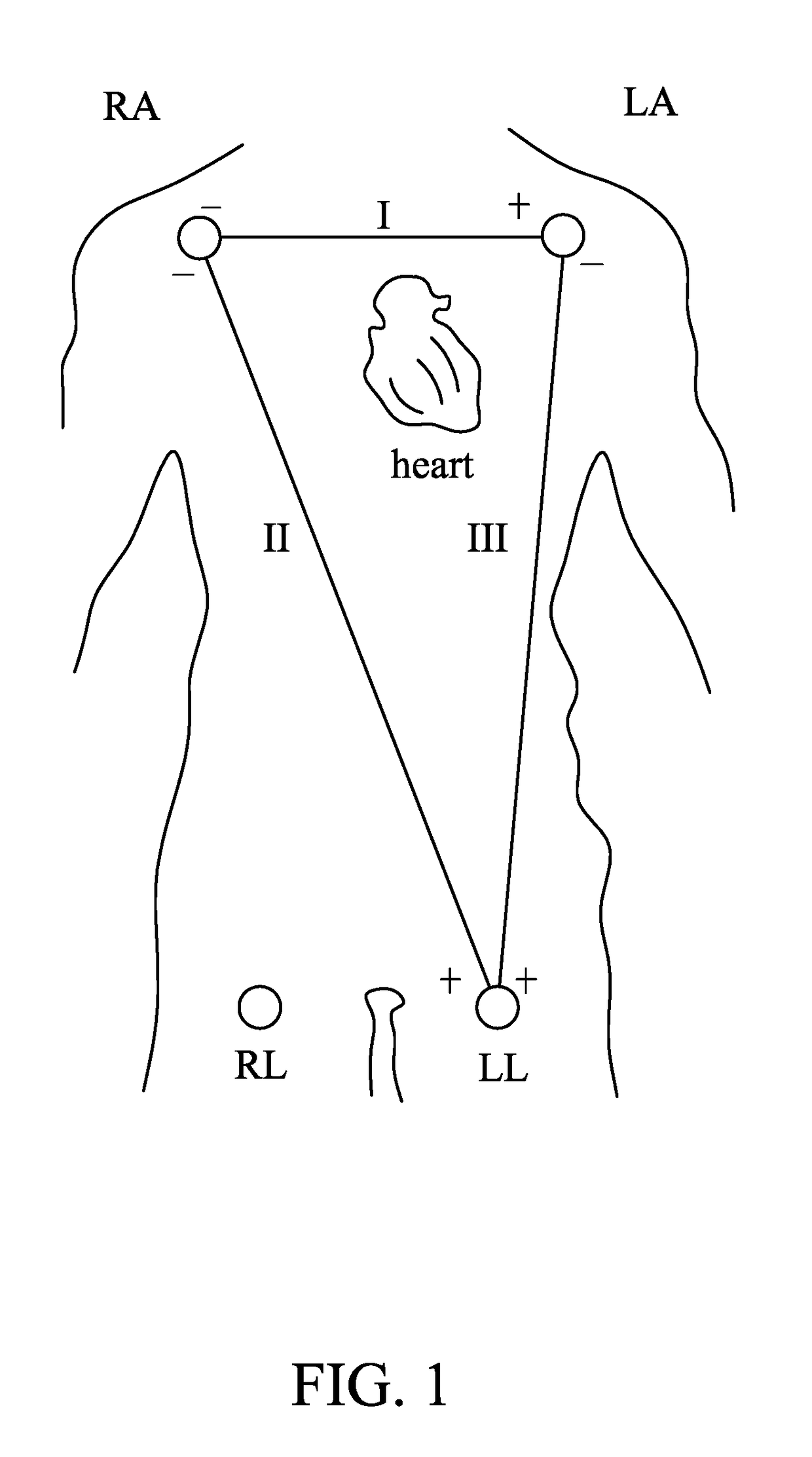Electrode device for wearable or handheld apparatus
a technology of electrophysiological signals and electrodes, which is applied in the field of electrophysiological devices for wearable or handheld devices, can solve the problems of inconvenient wear, inability to obtain high-quality electrophysiological signals, and interference with physiological signals, so as to achieve low-noise, high-quality electrophysiological signals quickly.
- Summary
- Abstract
- Description
- Claims
- Application Information
AI Technical Summary
Benefits of technology
Problems solved by technology
Method used
Image
Examples
first embodiment
[0068]Please refer to FIG. 4A for a cross-sectional view of an electrode device in accordance with one embodiment of the present invention, the electrode device comprises a conductive body 1 such as a main body made of copper alloy, a silver layer 2 situated above the conductive body 1, a silver compound layer 2′ such as a silver chloride layer situated above the silver layer 2, a liquid absorbing and releasing element 4 situated above the silver compound layer 2′, a shielding element 3 such as a flap covering an upper surface and a portion of a side surface of the liquid absorbing and releasing element 4, and a moving mechanism (not shown in FIG. 4A, and described in details in FIGS. 4B˜4F) configured to move the shielding element 3 back and forth between at least two positions. As long as a good electrical conductivity is maintained, the conductive body 1 may be made of an alloy of any metal, a compound, an electrically conductive polymer, or any other material such as carbon nano...
second embodiment
[0076]As for the electrode device installed on the inner side of a wrist watch, the shielding element of the electrode device of the first embodiment is too thick, making it difficult to put the shielding element onto the inner side of the wrist watch while allowing the shielding element to move, so the resistance is too large and causes discomfort. Please refer to FIG. 6 for a cross-sectional view of an electrode device in accordance with another embodiment of the present invention. As for an electrode device installed on the inner side of a wrist watch, FIG. 6 displays a more ideal electrode device, comprising a box-shaped silver layer and a box-shaped silver compound layer 42 used as electrodes (hereinafter referred to as “electrodes 42”) respectively, a liquid absorbing and releasing element 43 accommodated in the box-shaped electrode 42, a shielding element 41 covering the top of the electrode 42 and the liquid absorbing and releasing element 43, and a moving mechanism (not sho...
third embodiment
[0085]The following limitation must be taken into consideration when a handheld apparatus such as a mobile phone is used to capture electrophysiological signals. In general, most mobile phones come with a touch panel on the front side and a layer of insulator as the surface in order to detect the capacitance varied with the force applied on the touch panel by fingers. Please refer to FIG. 13 for side views of a mobile phone including an electrode device of the present invention in accordance with one embodiment, A and B indicates the statuses of not capturing and capturing an electrophysiological signal respectively. To use the mobile phone to capture an electrophysiological signal, the second embodiment comprises two electrode devices installed on a back side of the mobile phone, and the mobile phone includes an apparatus body (not labeled but indicated by a large rectangle), rotating arms 105, 106, of pivots 103, 104, a first electrode device 101 fixed to the back side of the mobi...
PUM
 Login to View More
Login to View More Abstract
Description
Claims
Application Information
 Login to View More
Login to View More - R&D
- Intellectual Property
- Life Sciences
- Materials
- Tech Scout
- Unparalleled Data Quality
- Higher Quality Content
- 60% Fewer Hallucinations
Browse by: Latest US Patents, China's latest patents, Technical Efficacy Thesaurus, Application Domain, Technology Topic, Popular Technical Reports.
© 2025 PatSnap. All rights reserved.Legal|Privacy policy|Modern Slavery Act Transparency Statement|Sitemap|About US| Contact US: help@patsnap.com



